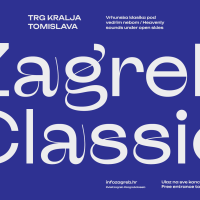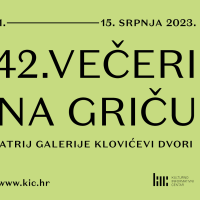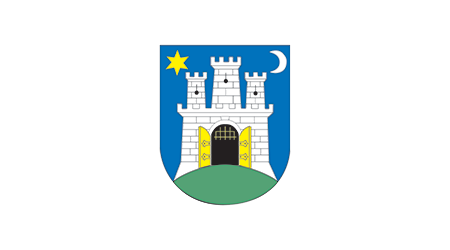The Silver of Ancient Vinkovci – The Archaeological Find of a Treasure Chest
The Silver of Ancient Vinkovci – The Archaeological Find of a Treasure Chest
 The rapid intervention by Zagreb's Museum of Arts and Crafts has been successful: the 30 silver objects which were discovered in late March in Vinkovci are now in Zagreb and they can be seen until 10th June. This was one of the most significant archaeological discoveries not only in Croatia but also in the world, which is why the exhibition entitled “The Silver of Ancient Vinkovci – The Archaeological Find of a Treasure Chest” is attracting major public interest.
The rapid intervention by Zagreb's Museum of Arts and Crafts has been successful: the 30 silver objects which were discovered in late March in Vinkovci are now in Zagreb and they can be seen until 10th June. This was one of the most significant archaeological discoveries not only in Croatia but also in the world, which is why the exhibition entitled “The Silver of Ancient Vinkovci – The Archaeological Find of a Treasure Chest” is attracting major public interest.
Vinkovci, a city in the east of Croatia, has long been known as an important historical and archaeological site, and the recent discovery, the most valuable so far, definitely reaffirms its reputation.
The locality where the treasures were found is almost in the centre of Vinkovci. It had been explored twice previously, in 1977-1978 and then again in 1990, and on both occasions the explorations unearthed valuable findings from prehistory and antiquity. However, in mid-March of this year, in the north-western part of the excavation site, the so-called Roman layer, a cavity was discovered and in it a treasure chest containing luxurious silverware. According to preliminary indications, it may date back to the second half of the 4th century. The silverware is extremely valuable; some of the examples are gilded and decorated using the Niello technique, whereas some have engraved decorations depicting animal and plant motifs, architectural designs, human figures, etc. The treasure chest contained a total of 50 silver dishes of different shapes and forms (platters, plates, bowls, jugs, glasses, spoons, etc.), of which 30 are on display at the exhibition.
Experts believe that the silverware belonged to a rich citizen of the city known as Colonia Aurelia Cibalae, which occupied the territory of today's Vinkovci in Roman times and was the third largest town in the Panonia Secunda Province. Cibalae was the birth place of the Roman emperors who hailed from Croatia; Valentinian (364-375) and Valens (364-378). Although there is a lack of credible proof of this, it is believed that the silverware, weighing a total of 36 kilograms, was buried during times of turmoil that struck the Roman Empire.
After being exhibited in Zagreb's Museum of Arts and Crafts, the treasure will be put away for safekeeping in the museum's coffers and occasionally taken out for analyses and conversations. When the long process is over, the entire collection will be permanently exhibited in Vinkovci, a city where continuous human habitation has lasted for over 8,000 years.
The exhibition has been jointly organized by the Museum of Arts and Crafts and the City Museum of Vinkovci under the auspices of the Ministry of Culture.
Published: 01.06.2012
 Hrvatski
Hrvatski English
English Deutsch
Deutsch Spanish
Spanish French
French Italian
Italian Russian
Russian Korean
Korean Japanese
Japanese Chinese
Chinese The rapid intervention by Zagreb's Museum of Arts and Crafts has been successful: the 30 silver objects which were discovered in late March in Vinkovci are now in Zagreb and they can be seen until 10th June. This was one of the most significant archaeological discoveries not only in Croatia but also in the world, which is why the exhibition entitled “The Silver of Ancient Vinkovci – The Archaeological Find of a Treasure Chest” is attracting major public interest.
The rapid intervention by Zagreb's Museum of Arts and Crafts has been successful: the 30 silver objects which were discovered in late March in Vinkovci are now in Zagreb and they can be seen until 10th June. This was one of the most significant archaeological discoveries not only in Croatia but also in the world, which is why the exhibition entitled “The Silver of Ancient Vinkovci – The Archaeological Find of a Treasure Chest” is attracting major public interest.









